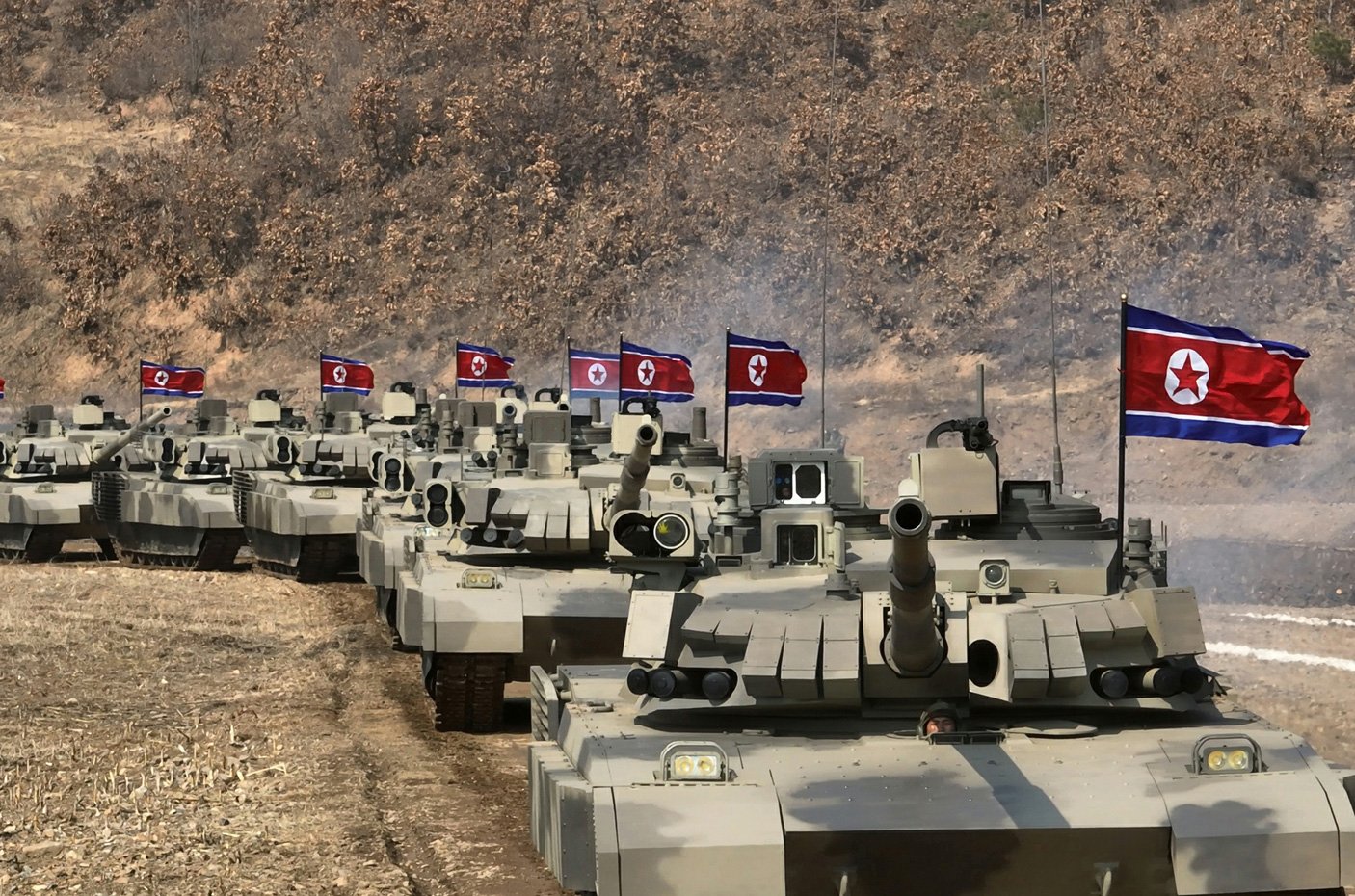A peculiar concern has hit the Korean Peninsula amid rising tensions: land mines laid by North Korea could be swept into the South due to torrential rains and flooding.
F-16s “Sitting Ducks” For Russian MiG-31 Fighters? Putin Warns Of Consequences Over Fighting Falcons
The South Korean military warned on July 17 that flooding might carry land mines from North Korea into the country. The Joint Chiefs of Staff (JCS) of South Korea informed local reporters that summertime floods could wash the mines across the border.
The JCS also expressed concern that North Korea might purposefully float mines downriver as a provocation. It stated that the DPRK appeared to discharge water from a dam on the Imjin River without prior notice on Wednesday, alerting ROK civilians to proceed with caution downstream.
This raises concerns about rains carrying North Korean mines.
Seoul’s warning comes after the North recently placed tens of thousands of more lethal mines along their closely guarded border. North Korea’s ongoing fortification drive along the border with the South started in April this year.
Forget J-20, China’s H-20 Stealth Bomber Threatens ‘Easy Penetration’ Of LAC; How Can IAF Respond?
Besides mine laying on a large scale, this drive includes erecting anti-tank barriers and reinforcing roads. In fact, satellite images have revealed that it is also building sections of walls in several places near its border with South Korea.
South Korean officials believe that North Korea wants to strengthen its frontline security posture and keep its soldiers and citizens from defecting to their country. This comes amid heightened tensions between the two estranged Koreas.
North Korean land mines could float into South Korea through flooding, Seoul warns: North Korean land mines could be swept into South Korea by flooding, South Korea's military warned Wednesday, after the North has recently placed tens of thousands of… https://t.co/jkcovnrSr6 pic.twitter.com/f7G4aTRAtz
— JPNWMN (@JPNWMN) July 17, 2024
Tensions between the two sides erupted last month when North Korea launched hundreds of trash-filled balloons to the South to express disapproval of a campaign by activists and defectors from the North Korean dictatorship who have been flying aid packages and pamphlets criticizing the Kim regime across the heavily guarded border for years.
More recently, North Korea alleged that the South sent at least 29 balloons carrying anti-Pyongyang leaflets over to its side. This prompted Kim Yo Jong, North Korean leader Kim Jong Un’s sister, to issue a stern warning that South Korea would face devastating consequences for dropping these leaflets.
North Korea stated that South Korea should be ready to pay a "very heavy price" for sending anti-DPRK leaflets into North Korea.
Additional leaflets were discovered by the KPA and Worker-Peasant Red Guards.
KCNA released a photo of a discovered leaflet. pic.twitter.com/l6pqoBJiWc
— Global: Military-Info (@Global_Mil_Info) July 14, 2024
Though neither side has engaged in any overt aggression, these micro-aggressive moves have fuelled tensions, with both sides warning of escalation. Last month, South Korea’s military fired warning shots after several North Korean soldiers crossed the border, making the North Korean troops retreat.
In recent years, tensions between the rival Koreas have escalated as North Korea has continued to test provocative weapons and South Korea has increased its military exercises with the US in a tit-for-tat exchange. Against that backdrop, the menace of landmines flowing into South Korea could further exacerbate the situation.

Both Koreas, according to experts, have mismanaged their mines and have no idea exactly how many or where they have been planted. During the summer, wooden North Korean mine boxes frequently wash downstream and result in fatal events in South Korea. A 2015 mine explosion that North Korea was held responsible for left two South Korean soldiers injured and brought the rivals dangerously close to war.
However, Seoul laments that despite the threat posed by these mines to people on both sides, Pyongyang has continued to lay thousands of landmines along the border.

North Korean Mine Laying Is Risky
South Korea recently told the media that tens of thousands of additional landmines have been placed by North Korea along the border, putting its forces through difficult working circumstances and resulting in numerous casualties.
The South Korean Defense Ministry said there had been at least ten incidents of mine explosions during the months-long operation to improve defenses along the demilitarized zone, which is already one of the most densely mined locations in the world, resulting in “multiple casualties” among the soldiers.
“Despite sweltering heat and the monsoon season, the North Korean military has laid down mines and erected wall fences along the front-line areas,” Seoul’s Joint Chiefs of Staff (JCS) said in a statement. “The newly planted mines are estimated to number in the tens of thousands.”
North Korea has placed land mines on an inter-Korean road within the DMZ per South Korean military officials to Yonhap.
North Korea conducted similar moves late last year and early this year. South Korean officials believe that North Korea will conduct additional moves to… pic.twitter.com/XhQ03UbKL5
— Global: Military-Info (@Global_Mil_Info) April 29, 2024
According to the ministry, North Korean soldiers who were called into action for this project have been living in “inadequate barracks conditions without weekends or change of duty, working 12 to 13 hours a day on average.”
JCS did not provide a time estimate, but it estimated that North Korea had planted tens of thousands of mines in the demilitarized zone (DMZ). It issued images of two varieties of DPRK landmines that were discovered recently—wooden box mines and plastic mines fashioned like leaves—and advised people to exercise caution when engaging in outdoor activities.
The official mentioned recent remarks made by Kim Yo Jong, the sister of the DPRK leader, and stated that the military was keeping an eye on whether North Korea was using the shifting of mines by floodwaters as a means of retaliation against anti-regime leafleting by South Korean activists.
South Korea also noted that in addition to potential incursions into southern territory, the South Korean military is prepared for “defections” by North Korean soldiers who are forced to labor in these “unfavorable working conditions.”
- Contact the author at sakshi.tiwari9555 (at) gmail.com
- Follow EurAsian Times on Google News




